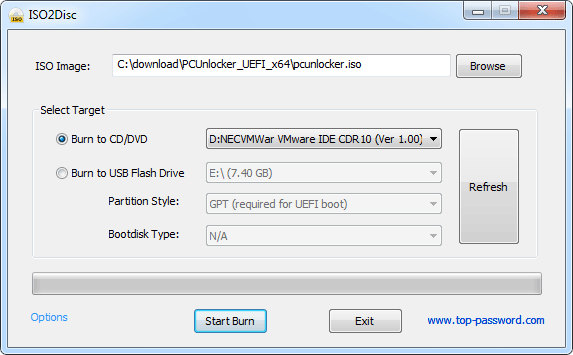
- #How to boot usb iso windows 8 how to
- #How to boot usb iso windows 8 install
- #How to boot usb iso windows 8 windows 10
- #How to boot usb iso windows 8 software
- #How to boot usb iso windows 8 Pc
Different versions of Windows use different file systems. If the USB drive is not bootable, you will need to create the proper bootable drive first. If the drive isn't bootable it will ask you to insert a bootable device. The QEMU emulator runs and if the drive is bootable, you will see 'Press any key to boot from CD or DVD.'

You can test the validity of the drive by clicking NO when the next confirmation dialogue box appears: You don't need to create any virtual disk image. Launch the app and click 'Run the LiveUSB' button on the screen.
#How to boot usb iso windows 8 install
Download the application from (you don't need to install it as it is a portable app for Windows) For this you will need to install a portable application called MobaLiveCD, which uses QEMU emulator to determine if the drive is bootable. This is why it would be worth your while to check if the drive is actually bootable. You will be able to boot Windows only if the drive is bootable. You need to make sure that USB drive has been prepared using the right tools and the right method. If the USB bootable drive has not been created the right way or if it is corrupt, you will not be able to install Windows with it. Part 4: Check If Your USB Drive Is Actually Bootable This will instruct the computer to prioritize the boot and select USB drive as the first option, and insert the bootable USB drive and restart your computer. Select the appropriate option from the Boot Menu. Once you are in the Boot section of the BIOS, you can select the 'First Boot Device'. Find the 'Boot Options' or something similar to it (the steps may vary across computers but it is easy to find).
#How to boot usb iso windows 8 how to
For example, Dell computer has different ways to enter BIOS setup, see how to get into BIOS on a Dell computer. It may vary depending upon your computer model. More often than not it is the 'F2', 'Del' or whichever is the appropriate key for your computer.
#How to boot usb iso windows 8 Pc
When the PC starts to run, on the first screen you will see the key you need to press in order to enter the BIOS setup. Restart your PC or if it is already shut down, turn it back on. So, what you need to do is change the BIOS settings so that your computer accepts USB boot. It is also possible that your computer has not been set up to boot from the USB at all even though it is supported. We recommend iSeePassword Dr.Boot tool.ĭon't miss: How to Burn ISO Image to USB Drive on Windows 7/8/10 Part 3: Set up Your PC for USB BootĮven if your computer supports USB booting, remember that USB is not always the first boot priority. If your computer won't boot from USB, the only solution is try to re-make a new bootable USB disk with professional ISO burning software. These computer will generally display "NTLDR is missing", for this problem there is no good solution currently. But only a small part of computers can boot win8/Win7 except Win10. These free burning tools can't be updated continuously and provide any support service, even some tools don't support UEFI BIOS! Eventually, the generated USB disk cannot normally boot the computers.
#How to boot usb iso windows 8 software
In most cases, you need to reexamine if the ISO burning software is the right one for you? As we know there are many free ISO burning tools out there, like Rufus, RMPrepUSB , Windows USB/DVD Download Tool or ISO to USB, etc. Part 2: Re-Make A New Bootable USB with WizBurn

You will need to boot using some other method. If you do not see the USB boot option, it means that your motherboard does not support it. Once you are there you can set the Boot Priority You will need to explore a bit and find the 'Boot Options' (or something like that).
#How to boot usb iso windows 8 windows 10
If you forgot Windows login password, try to reset your Windows 10 password with PC Unlocker software. In case you haven't done this before, it is best to take the help of a technician. If you forgot BIOS password, you will need to reset it by taking out the CMOS battery from the motherboard. Note: If you have previously set the BIOS password you will need to provide the password to enter BIOS setup. When the PC starts to run, on the first screen it will display the key you need to press in order to enter the BIOS setup. Restart the computer or if it is shut down, power it on. The steps may vary across computer models but remain more or less the same for all PCs: In order to find whether your computer is USB bootable or not, you will need to check the BIOS setup. While most modern computers today support USB booting, there are some that do not. Your computer will boot from the USB bootable drive only if it supports this type of boot. Part 1: Check If Your PC Supports USB Booting


 0 kommentar(er)
0 kommentar(er)
